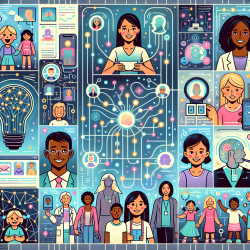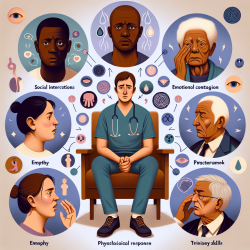Unlocking the Secrets of the Genome: How Disease Ontology Can Transform Your Practice
As a practitioner in the field of special education, understanding the genetic underpinnings of various conditions can significantly enhance your ability to support students with diverse needs. The recent research article, "Annotating the human genome with Disease Ontology," offers groundbreaking insights into how we can better annotate the human genome to uncover gene-disease relationships. This blog will explore the key findings of the study and how you can apply these insights to improve your practice.
Understanding Disease Ontology
Disease Ontology (DO) is a comprehensive framework that organizes diseases into a structured format, allowing for the precise mapping of gene-disease relationships. This study utilized the Unified Medical Language System (UMLS) MetaMap Transfer tool (MMTx) to discover these relationships from the GeneRIF database. By employing a thesaurus-based approach, the researchers achieved a 91% recall rate and a 97% precision rate, significantly outperforming traditional methods like the Online Mendelian Inheritance in Man (OMIM) database.
Why This Matters for Practitioners
For practitioners, the implications of this research are profound. By leveraging Disease Ontology, you can:
- Enhance Diagnostic Accuracy: With a higher recall rate, DO allows for more comprehensive identification of potential genetic conditions, leading to more accurate diagnoses.
- Improve Intervention Strategies: Understanding the genetic basis of a condition can inform targeted intervention strategies, improving outcomes for students.
- Stay Informed: As new gene-disease relationships are discovered, DO provides a framework for integrating this information into your practice, ensuring you remain at the forefront of scientific advancements.
Encouraging Further Research
While the study presents significant advancements, it also highlights the need for ongoing research. Practitioners are encouraged to delve deeper into the potential of Disease Ontology by:
- Participating in Professional Development: Attend conferences and webinars that focus on genetic research and its applications in education.
- Collaborating with Researchers: Engage with geneticists and researchers to explore how emerging findings can be applied in educational settings.
- Conducting Your Own Research: Consider undertaking research projects that investigate the impact of genetic insights on educational practices and student outcomes.
Conclusion
The integration of Disease Ontology into genomic annotation represents a significant leap forward in our ability to understand and address genetic conditions. By embracing these advancements, practitioners can enhance their diagnostic and intervention capabilities, ultimately improving the educational experiences of students with special needs.
To read the original research paper, please follow this link: Annotating the human genome with Disease Ontology.










